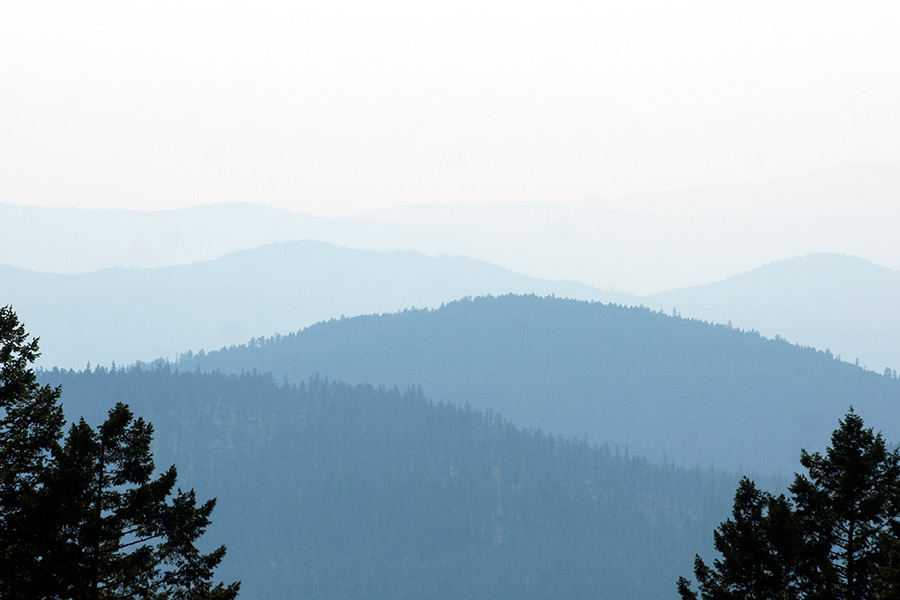GRANTS PASS, Ore. — Widespread drought across the West had forecasters expecting an above-average wildfire season this summer, which so far has not lived up to expectations.
U.S. Forest Service Chief Tom Tidwell said Wednesday that the hot windy weather known as “red flag” days have not lined up with the lighting strikes that start most fires, particularly in drought-parched California.
The result has been that while the number of fires to date is about 70 percent of the 10-year average, the area burned is less than half.
But that is changing, Tidwell said from Washington, D.C. Eighteen large fires were burning in the Northwest with intensities not normally seen until August.
With only about $1 billion budgeted for fighting wildfires, the Forest Service expects by late August to once again have to tap other funds, such as forest thinning projects, to continue fighting fires as the season goes on into the fall, Tidwell said. Last year, that amount was $500 million.
“If we can stop a fire from coming into a community, we will stop it,” he said. “Cost is just an outcome. It isn’t what drives our actions. What drives our actions is safe, effective suppression tactics.”
The largest wildfires — 1 percent of blazes across the country each season — take up 30 percent of wildfire spending. The Obama administration has proposed changing the way those fires are paid for, tapping Federal Emergency Management Agency disaster funds rather than taking from other programs within agency budgets, said Jim Douglas, director of the Department of Interior Office of Wildland Fire.
Sen. Ron Wyden, D-Ore., and others have filed legislation to do the same thing. Wyden said the current situation makes matters worse by curtailing programs like forest thinning that will reduce future fire danger.
Meanwhile, the Union of Concerned Scientists released a report warning climate change is contributing to longer and larger fire seasons, and efforts to protect new homes in forests are driving up firefighting costs and risks.
The report suggested making local governments responsible for more of the firefighting costs now born by states and the federal government. That would give local governments an incentive to allow fewer homes in areas with high fire risks.
Overall, wildfires have burned 2,471 square miles across the nation this summer, according to the National Interagency Fire Center in Boise, Idaho. The 10-year average for this date is 6,016 square miles.
Fires ignited by lightning about 10 days ago have burned across 1,394 square miles of timber and rangeland in Washington and Oregon. They have destroyed more than 150 homes, most of them in Washington, according to the Northwest Interagency Coordination Center in Portland. One man died of a heart attack defending his home in Washington.
Another series of thunderstorms across the region Tuesday and Wednesday produced rain and cooler temperatures that have helped fire crews increase containment of the fires. But the weather also produced more than 20,000 lightning strikes that resulted in at least eight new small fires in Washington, and 25 in Oregon, according to the Portland center.
Arizona, California, Idaho and Nevada each had one large fire burning, and Utah had four, the Idaho fire center reported.
In the spring, the fire center was predicting a busy wildfire season in Southern California, New Mexico and Arizona, expanding into Northern California and southern Oregon later in the year.
Things got off to a blazing start in May in Arizona and Southern California. Dozens of fires around San Diego forced tens of thousands of people to flee, burned 36 homes and caused $20 million in damages. In northern Arizona, 300 people evacuated in the path of a fire that burned through 33 square miles, costing more than $10 million to fight.
Since then, weather has been making it tough for big fires to get going, said Ed Delgado, head of predictive services for the fire center. Plenty of fires are starting, but timely arrival of cool, moist air and even rain often has slowed their spread.
“The kicker is going to be the next six weeks,” said John Glenn, chief of fire operations for the U.S. Bureau of Land Management in Boise. “We definitely have the potential (for more fires) in California, in the Pacific Northwest, and the northern Great Basin, which includes Nevada, southern Idaho and Utah. Those areas we will be watching really close.”
